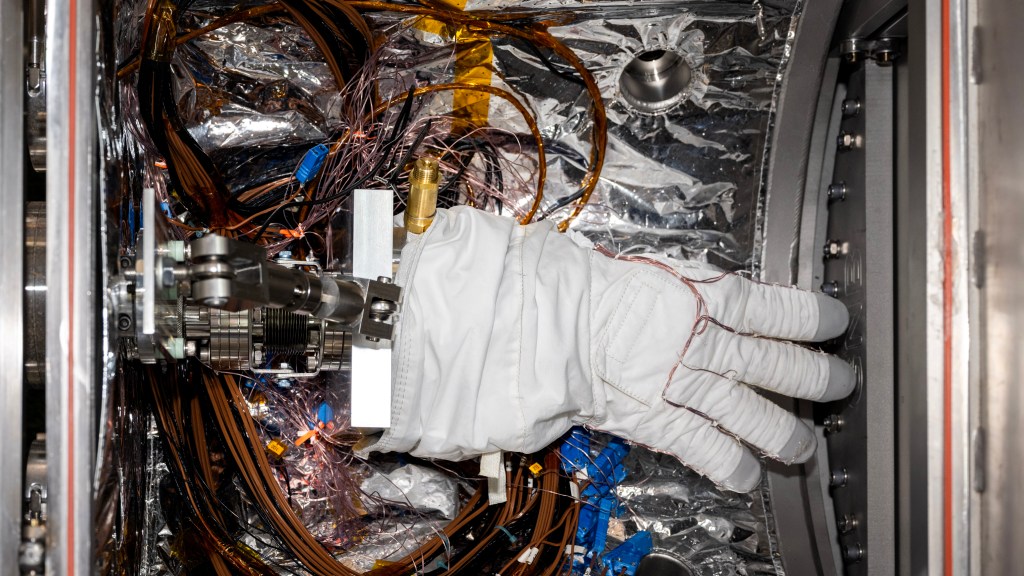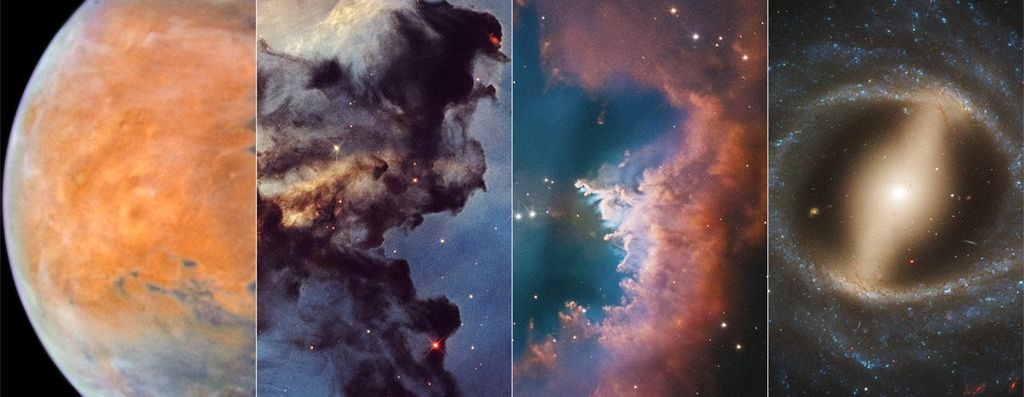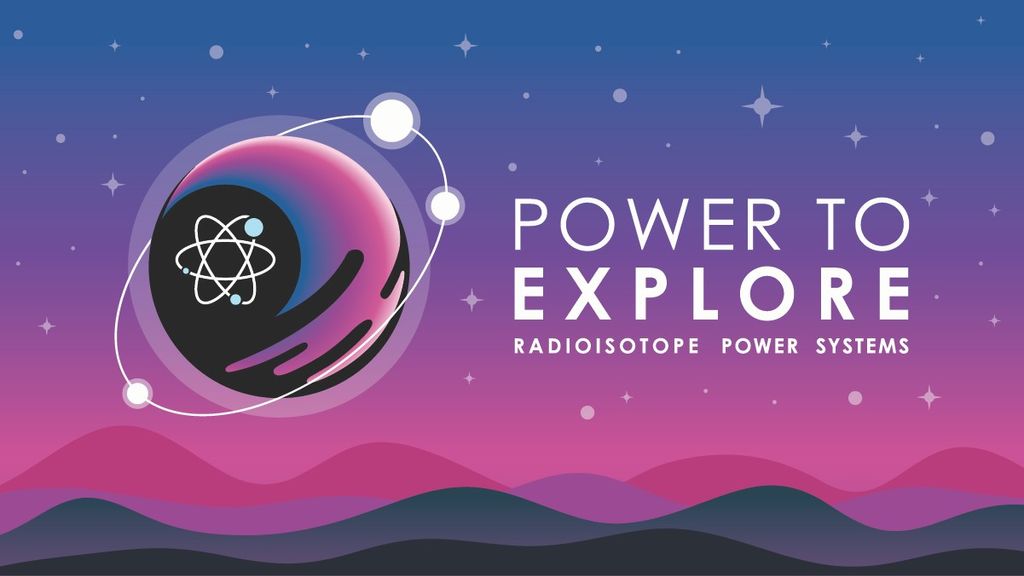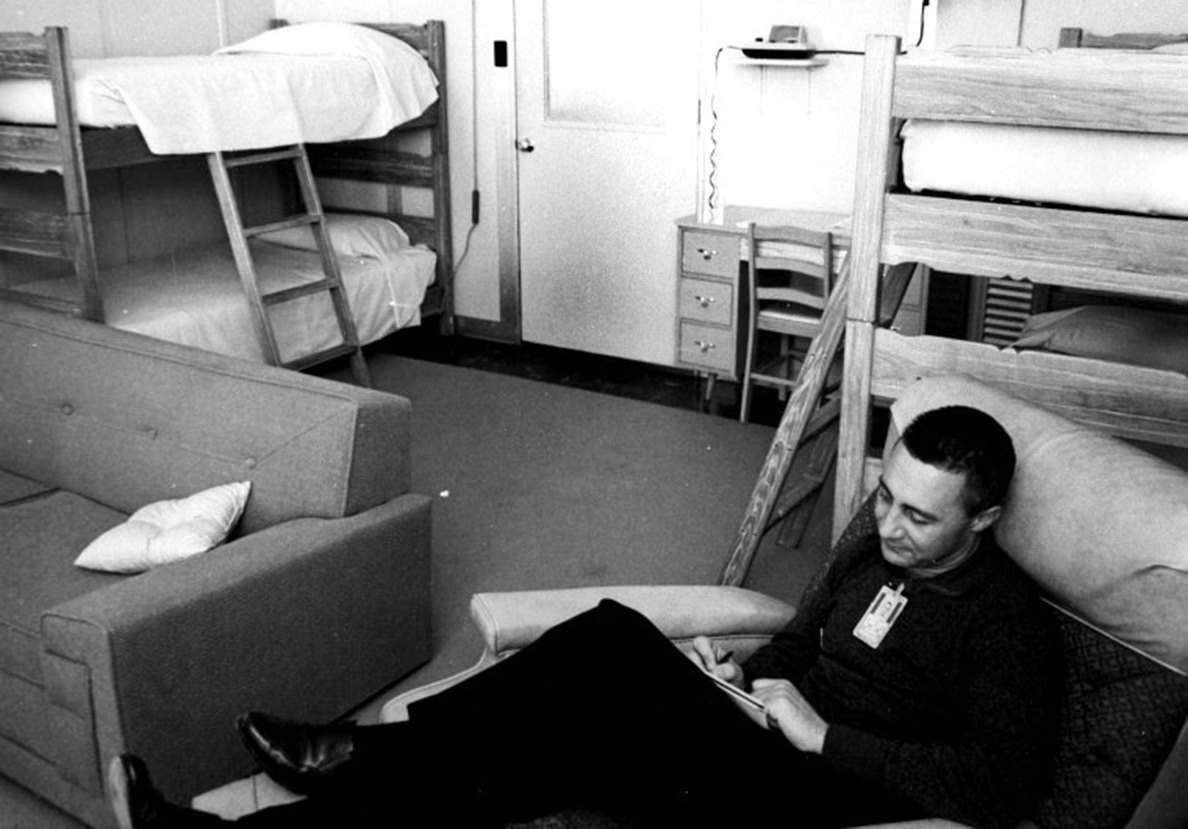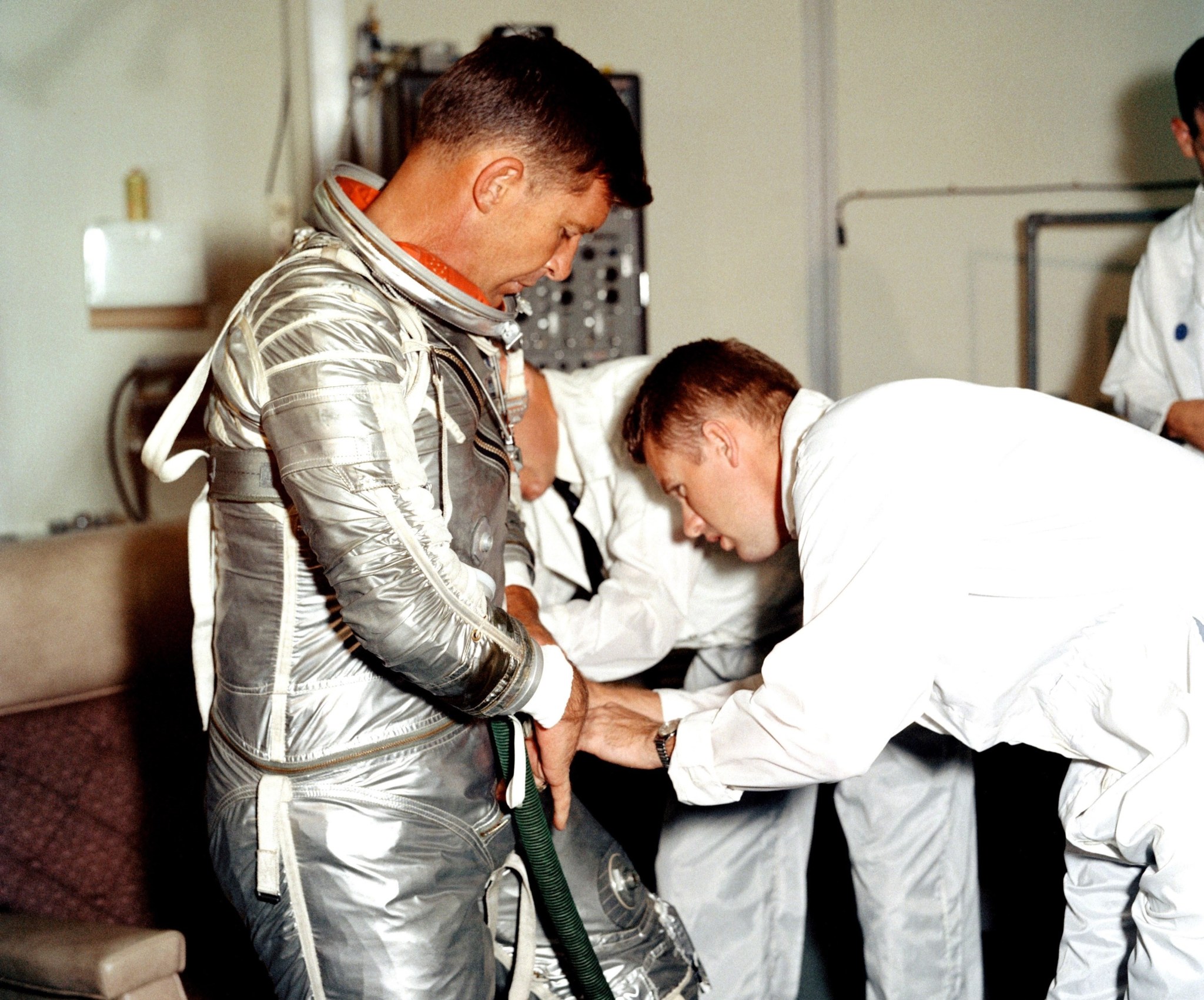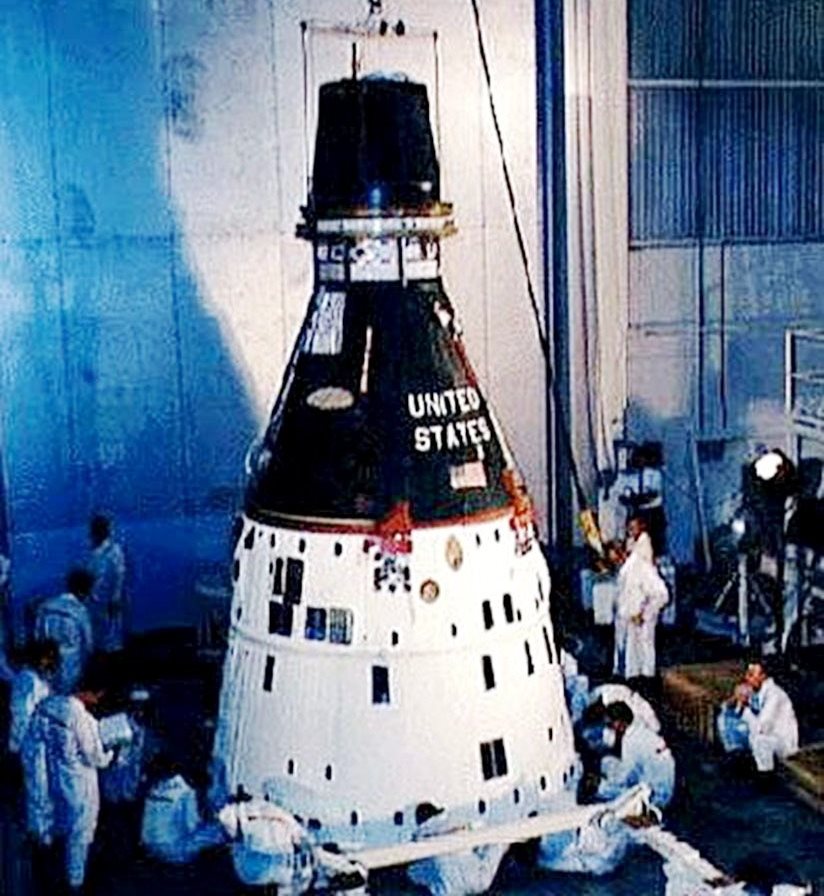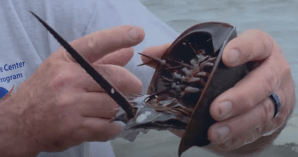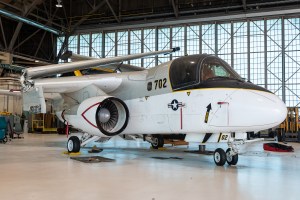During America’s first human spaceflight program, Project Mercury, the eyes of the world often focused on Cape Canaveral Air Force Station in Florida where the nation’s first astronauts were taking their first steps into space. A centerpiece facility in this effort for astronaut training, crew quarters and early spacecraft processing was Hangar S at the Cape.
During America’s first human spaceflight program, Project Mercury, the eyes of the world often focused on Cape Canaveral Air Force Station in Florida where the nation’s first astronauts were taking their first steps into space. A centerpiece facility in this effort for astronaut training, crew quarters and early spacecraft processing was Hangar S at the Cape.
Throughout the early 1960s, NASA engineers and technicians developed capabilities that enabled revolutionary advances in exploration, enhancing knowledge well beyond what could have been imagined at the time. Much of that work took place in Hangar S.
Built by the U.S. Air Force in 1957, Hangar S originally served as an aircraft maintenance and storage hangar. Soon after, it housed operations of the U.S. Naval Research Laboratory’s Project Vanguard. The 75-foot-tall rocket was part of the nation’s earliest efforts to launch Earth orbiting satellites.
From 1959 to 1963, the 61,300-square-foot facility was crucial to NASA’s early human spaceflights and became a hub of activity as America prepared to send its first persons into space.
NASA was established in 1958 and the next year the new agency announced the selection of seven military test pilots who would become America’s first astronauts.
Later, in 1959, NASA acquired Hangar S through an agreement with the Department of Defense and modified it for use by the Space Task Group’s Pre-Flight Operations Division. This is where the Mercury spacecraft capsules were received and tested.
Based at the Langley Research Center in Hampton, Virginia, the Space Task Group managed Project Mercury. About 50 experts from the organization moved to Cape Canaveral in 1958. Joining them were nearly 80 technicians from St. Louis-based McDonnell Aircraft Corp., which designed and built the spacecraft. Together, they set up new offices and testing areas in Hangar S.
By the end of 1960, NASA referred to Hangar S as the “nerve center” of Project Mercury, and the workforce grew to over 400 technicians and contractors preparing the Mercury capsules for flight.
According to Don Phillips, an aerospace technologist for Project Mercury, being a part of the early space program was rewarding.
“I would have to say that nothing was more exciting than work on the Mercury Program, because we were doing things for the first time,” said Phillips. “It was new.”
"I would have to say that nothing was more exciting than work on the Mercury Program, because we were doing things for the first time. It was new."

Don Phillips
Aerospace Technologist for Project Mercury
The processing of the Mercury spacecraft began with its arrival at the Cape Canaveral Skid Strip aboard a transport aircraft. It then was transferred to Hangar S for a capsule “shake-down.”
The hangar contained all the necessary facilities, storage and work areas required to prepare the capsule, including the “white room,” a clean capsule checkout area located in the northeast corner of the high bay. Across the bay from the white room was an altitude chamber used for Mercury capsule environmental control system checkout in a high-altitude environment.

The altitude chamber allowed engineers and technicians to test the leakage rate of the capsule’s pressure shell and verify that the spacecraft’s environmental control system and other equipment all worked as designed.
Once all assembly, checkouts and testing were complete, the Mercury spacecraft was transported a short distance to one of Cape Canaveral’s launch pads. At Pad 5, the capsule would be mated to a Redstone rocket for suborbital flights, or at Launch Pad 14, it would be placed atop an Atlas for the missions to Earth orbit.
While astronauts prepared for their eventual trips into space, a group of chimpanzees also were undergoing training in Hangar S to ensure humans could withstand the physical rigors of spaceflight.
The first chimp, named Ham, launched on Mercury Redstone-2 on Jan. 31, 1961. The 16-minute flight helped pave the way for an astronaut to follow into space about four months later.
On May 5, 1961, Alan Shepard became the first American to fly in space during a 15-minute suborbital flight.
Recalling the fact that the United States was in the Cold War competition with the Soviet Union, Ike Rigel felt Shepard’s trip into space was crucial.
“So this was a very significant flight, because the country needed this,” said Rigell, Electrical Network Systems chief for Project Mercury. “The whole free world needed this flight at that time.”
Throughout Project Mercury, Hangar S served as not only a spacecraft preparation facility, but it also was the base of operation by the astronauts when they were at the Cape, especially in the days and weeks just prior to a launch.
The astronauts often spent long 12-hour days at Hangar S, rehearsing their missions in the “procedures trainer,” an exact mock-up of the Mercury capsule’s interior.
Astronaut Scott Carpenter felt the extensive training was a key part of being prepared for the actual missions and was well worth it.
“Climbing into that spacecraft and sitting on the top of the rocket was something we had simulated time and time and time again,” said Carpenter, who flew America’s second piloted orbital mission. “So, in a certain sense, it was just another day at the office, except this time, your realized that it was for real.”
While the hangar also housed facilities for the Mercury spacecraft preparations and astronauts’ pre-flight training, it also was the location of the crew quarters situated on the second floor of the hangar.
Looking something like a college dormitory, the crew quarters included beds and lounging areas for quiet reading or spending some time with a last minute review of the flight plan.
The astronauts slept, ate and underwent medical examinations there in the days and weeks before flight. On launch day, the pilot was assisted with the complex process to don his spacesuit that would protect him in the event of a spacecraft depressurization.
When all was ready, the astronaut departed Hangar S in the glare of television lights for the transfer van. The specially outfitted truck would make the trip to Launch Pad 5 or 14.
Following John Glenn’s historic three-orbit mission on Feb. 20, 1962, President John F. Kennedy visited Cape Canaveral to tour facilities and congratulate America’s first person to circle the Earth in a special ceremony at Hangar S.
After the Mercury missions, the spacecraft would be returned to Hangar S for post-flight inspections. Key parts would be removed for study so lessons learned could be applied to future designs.
Following the 22-orbit mission of Gordon Cooper aboard Mercury Atlas-9 on May 15 through 16, 1963, America’s first human spaceflight program came to an end.
The next year, the first unpiloted flight of the two-man Project Gemini missions lifted off from Cape Canaveral’s Launch Pad 19.
The first Gemini spacecraft also were processed for flight in Hangar S. But as NASA began opening news facilities at the Kennedy Space Center on adjacent Merritt Island, Gemini processing moved to the Manned Spacecraft Operations Building, now known as the Neil Armstrong Operations and Checkout Building.
The interior of the Hangar S high bay then was modified later in 1965 with the construction of a satellite processing area. Spacecraft processed in the new facility included those for NASA’s Biosatellite program and the agency’s Lunar Orbiter probe that mapped the moon prior to the Apollo missions of the late 1960s and 1970s.
As the space shuttle era began in 1981, work at Hangar S supported the new program. The clean room was used to process small shuttle payloads and other orbiter experiments. Much of the operational area was used to maintain equipment used in the retrieval of the shuttle’s solid rocket boosters.
During the Space Shuttle Program, Hangar S also served as a maintenance facility for Self-Contained Atmospheric Protective Ensembles, better known as SCAPE suits. The rubber-coated garments protect technicians in the event of exposure to toxic chemicals such as rocket propellants.

The final space shuttle mission, STS-135, took place in July of 2011. With that, work inside Hangar S came to an end.
Cape Canaveral’s Hangar S was America’s starting point for the birth of the nation’s efforts in human space exploration. But, in the words of Russian space pioneer, Konstantin Tsiolkovsky, “The Earth is the cradle of humanity, but one cannot live in a cradle forever.”
NASA at the Kennedy Space Center now has grown from a historically government-only launch facility to a multi-user spaceport for both federal and commercial customers. The agency’s team on Florida’s Space Coast continues to work toward meeting the nation’s spacefaring needs for the 21st century.
These advances will include the Orion spacecraft and the Space Launch System super rocket to allow humans to walk on distant destinations such as Mars and beyond.
By Bob Granath, Kennedy Space Center


